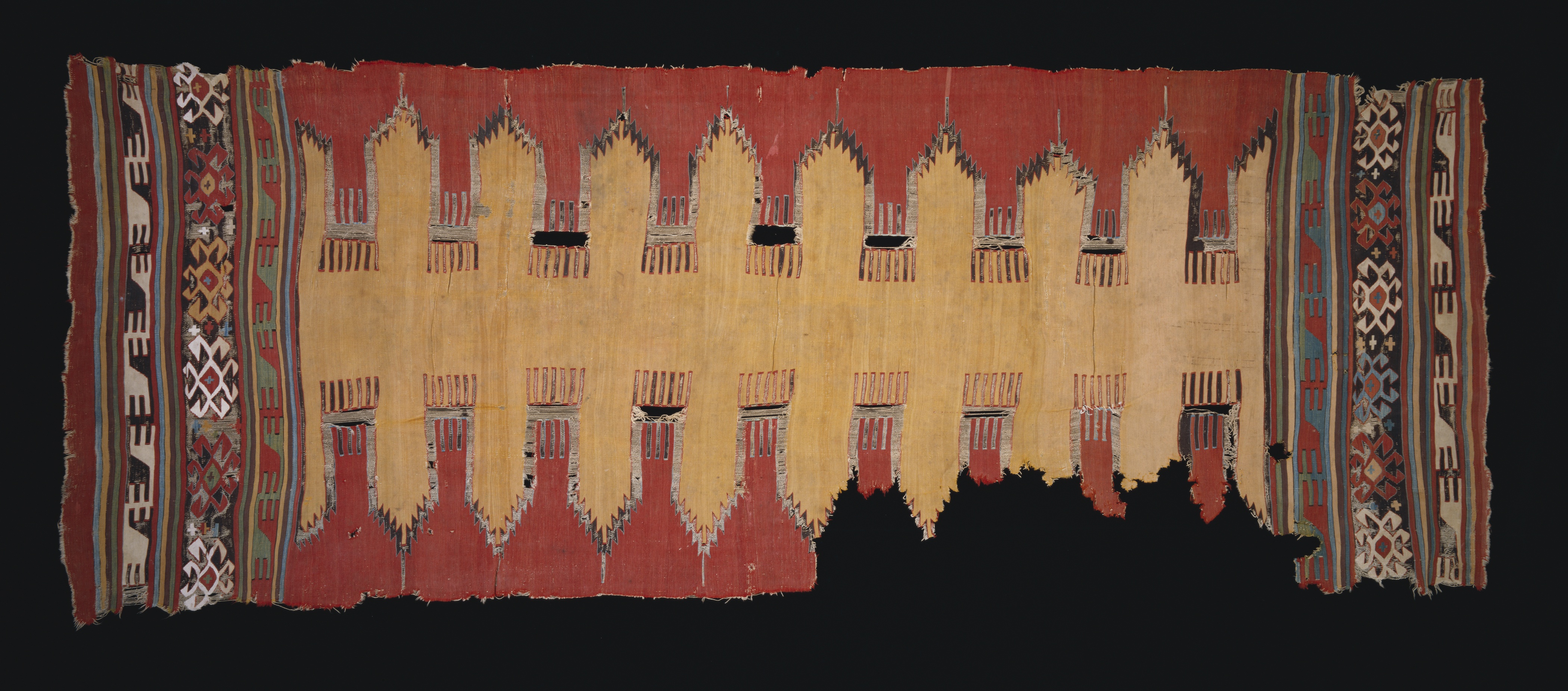To tell you the truth, I am far from a specialist in the field of textiles, but what I can say for sure is that the Anatolian kilim exhibition currently on view at the de Young Museum is well worth a visit. Every expert would agree with me on that: those in the know claim that the de Young’s collection of antique rugs and carpets produced by nomadic tribes in the Asian part of Turkey is among the world’s finest. And not only that – you hardly ever get a chance to behold a crafts show in such a setting.

Kilim, 18th century Turkey, Anatolia Wool, cotton; slit tapestry weave 142.2 x 350.5 cm (56 x 138 in.) The Caroline and H. McCoy Jones Collection Gift of Caroline McCoy-Jones.
The museum boasts the second largest textiles gallery in the US, which gives each piece a lot of room to breathe (the effect would be quite different if they were all crammed together in a small space). Given that the kilim are mostly huge, and that the light in the gallery is subdued, I felt like I was walking through an exhibition of giant abstract paintings. I’m reminded especially of the first time I saw Mark Rothkos at the Tate Modern in London: a whole room of somber canvasses, a hushed, quasi-religious ambiance. Rothko liked the color red, and the anonymous Anatolian craftspeople did, too. Of course, those similarities are no more than superficial, but I found it interesting that the same exhibition treatment was accorded to both the postwar American abstraction, saddled with the stereotypes of masculinity and fierce individualism, and the kilim, an art form associated with femininity and collectivity (each carpet was woven by several women). You must also remember that long ago these exhibit pieces were fully functional objects, and they existed in an environment as removed from the sterile museum galleries as possible. But, the inauthenticity of the setting just lets you fully focus on the formal beauty of the kilim. When we think “Turkish rugs,” we usually imagine an explosion of Oriental flourishes, but the ornaments of the exhibited pieces are actually pretty sparse, and, I daresay, comparatively restrained, making the kilim look surprisingly Modern. But Modern they are not: the carpets are from the 15th to the 19th Centuries, with some patterns dating back to the Neolithic era (!!!). Truly remarkable is the abundance of goddess motifs, which originate long before the Islamic times.
With this show, the de Young celebrates the 20th anniversary of the landmark exhibition of Anatolian kilim, which came from the collection of entrepreneur H. McCoy Jones and his wife Caroline. Before that exhibit, it took five years to restore the pieces to all their former glory, so you can admire not only the mastery of the weavers and dyers, but also the skill of the conservators. The show will be open until June 10th 2012.
RELATED LINKS
de Young Museum Official Website
Let us know your thoughts on the Anatoliam kilim exhibition at the de Young. Let us know what you think! Follow us on Twitter and like us on Facebook to give us a shout. You can also stay on top of exciting events from around the world by downloading the eventseeker app for iPhone, Android or Windows.
